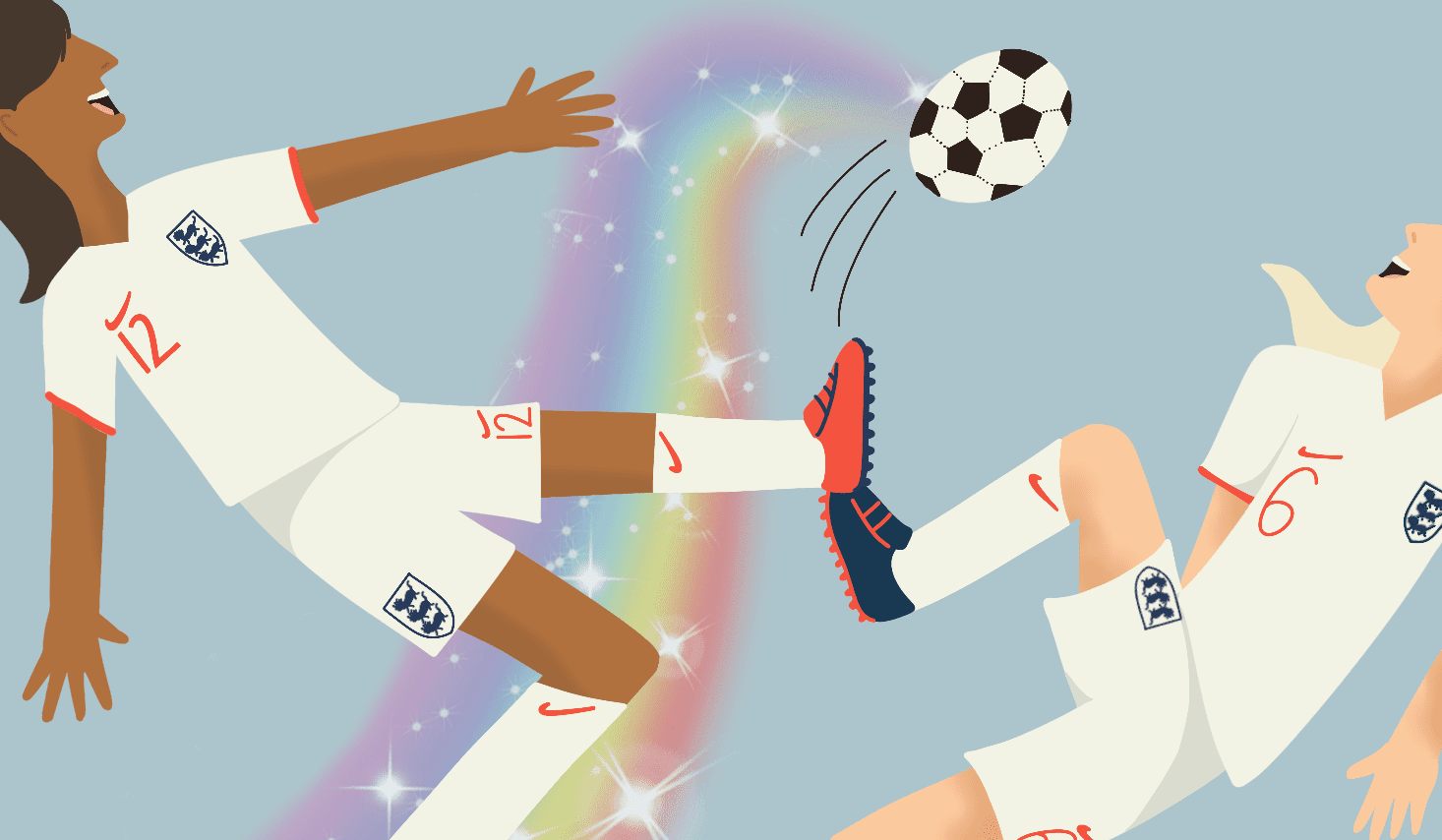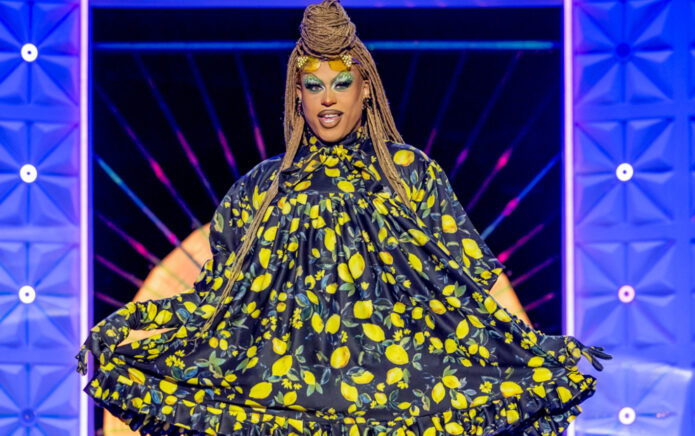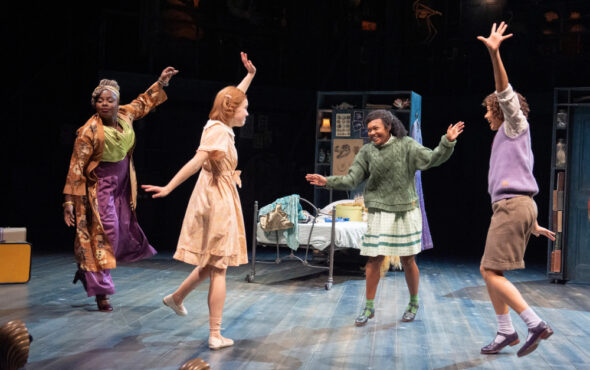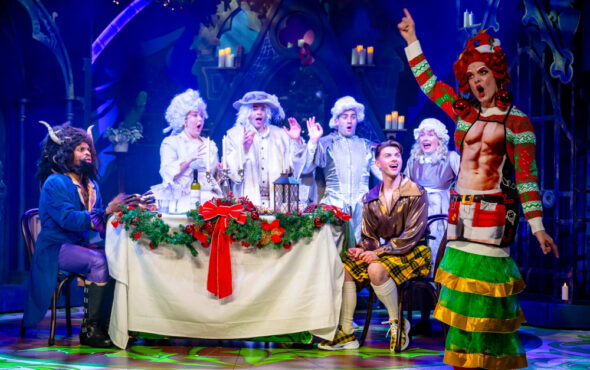
Standing at the sidelines of a lush green pitch I bent to tie the laces of my worn out trainers. Looking nervously at the other faces around me, I saw people dotted around the pitch, smiling, stretching and deftly juggling footballs with their feet. Their cleats dug assuredly into the ground as they dashed around the grass. I undid my laces and re-tied them again slowly, stalling. It was my first time stepping onto a football pitch to play.
Chatting to one of the other girls on the pitch, I loosened up. We laughed together at our mistakes as we practised dribbling and scoring and, as we discussed our personal lives, it quickly became apparent that we were both queer. That day I left practice with the number of my soon-to-be girlfriend, confirming a long held reputation about women’s football; it is more LGBTQ+ inclusive than the men’s game.
Women’s football is the fastest growing women’s sport in the world. With increased investment from commercial sponsors and media outlets promising more thorough coverage of games, the sport is slowly catching up to the popularity the men’s game has enjoyed for decades. The 2019 Women’s World Cup brought an unprecedented amount of attention to the game with a record 1.12 billion viewers tuning in to watch the Netherlands play the USA in the final. That competition featured 40 out LGBTQ+ players who were celebrated for their talents on the pitch and praised for their openness off pitch as they celebrated their victories proudly with their loved ones. The US women’s team even boasted an engaged couple on the squad in goalkeeper Ashlynn Harris and defender Ali Krieger.
This inclusivity is unfortunately not equally reflected in the men’s game, however. There are currently no openly LGBTQ+ players in the British Premier League whilst LGBTQ+ rights activists have criticised FIFA for hosting both the previous and forthcoming World Cup in Russia and Qatar respectively, where LGBTQ+ discrimination is enshrined in law.
Recent events in the men’s game offer hope, however. In May, Blackpool F.C midfielder Jake Daniels became the UK’s first openly gay active male professional footballer and, earlier this month, Brazilian referee Igor Benevenuto became the first FIFA-ranked referee in football history to come out as gay. As the Lionesses prepare to face the finals of the 2022 Women’s UEFA Euros with seven openly queer players in their squad alone, GAY TIMES asks: how is women’s football helping LGBTQ+ inclusion within the sport as a whole?
Ever since Bend it Like Beckham teased queer fans with its homoerotic subtext, the link between lesbians and women’s football has been strong. Some have suggested that women in sport are already committing a transgressive act as sport is culturally regarded as ‘masculine’. In this way, women in sport exist in a climate with less rigid gendered expectations; creating a safer climate to be openly queer. However, women in sport struggle against the stereotype that all women athletes are queer. The fact remains, nevertheless, that many women athletes are. Queer women are among the most venerated players in the women’s game and this sort of visibility opens up football to queer fans.
This rings true for Rosie Hall, a lesbian and lifelong Arsenal fan, who tells GAY TIMES that it is the community that women’s football offers that she most cherishes. “People are much more open and accepting. It’s amazing when you’re walking around how many other queer people you see at a women’s game!” she says.
“I’ve never felt scared to show affection to my fiancée at a women’s game, but I certainly have at the men’s. Of my favourite female players, I’d say most of them are openly queer women and I’d love to see the men’s game become more inclusive in that way but the culture of the men’s game still feels very straight, white, macho man,” she adds. “As a woman – let alone a gay woman – I feel a bit judged going to men’s games,” says Rosie.
Holly Mallet, a football fan and improv performer, echoes this sentiment, “Sometimes the men’s games have an edge to them that doesn’t feel so safe. That just isn’t the case with the WSL (Women’s Super League), I’ve always felt fully comfortable at women’s football matches.”
For Holly, the recent growth of the women’s game adds to the thrill of the sport: “There’s a joy and camaraderie that comes with supporting your team, but there’s this extra bubble of excitement that comes with knowing you’re witnessing the start of something that’s about to become absolutely huge.”
Professor Rory Magrath, a researcher of homophobia and masculinity, explains how this newness may be a potential reason for the increased LGBTQ+ representation within the women’s game. “Professional organised women’s football in this country has emerged in a period of time where it hasn’t had to deal with a lot of the cultural challenges that the men’s game has and because of that, the women’s game doesn’t suffer the same sort of cultural lag,” he says. The Women’s Super League was founded in 2010, the year discrimination on the grounds of sexual orientation was outlawed in the Equality Act. Whereas the FA was founded in 1863, over 100 years before homosexuality was decriminalised in the UK.
View this post on Instagram
While the women’s game has faced its own unique challenges and restrictions, including a 50 year ban from the FA, its growth in a climate where 1 in 5 people believe homosexuality is wrong (figures from 2010) compared to 1 in 2 thirty years earlier has made LGBTQ+ inclusion easier within the sport. Whereas, in order to overcome the entrenched prejudice that has been normalised in the sport, the men’s game must break the mould. However, Magrath warns against ignoring the progress that the men’s game has made.
“I think it’s easy to say that football is absolutely immune to any broader cultural changes but that is absolutely not true at all,” Magrath says. However, he is quick to note that change has largely been driven from the ground up. “There are 92 professional men’s football groups in England and many of them have an officially recognised LGBTQ+ fan group that has emerged from the grass roots, which is important to mention. Athletes and fans have taken on the role themselves in the absence of support and guidance from governing bodies,” he adds.
An absence of useful intervention from football’s governing agencies may explain the recent growth in grassroots LGBTQ+ football clubs on a local level. In Liverpool, The Mersey Marauders formed to offer the LGBTQ+ community a space to join in the beautiful game whilst the Cardiff Dragons Football Club is opening up football to Wales’ queer community; signalling the need and demand for inclusive spaces within the sport. Then there’s Stonewall FC, which was independently set up back in 1991 with the aim to increase LGBTQ+ inclusion within football. Thirty years later, the club has expanded to three competitive 11-a-side teams and three competitive Women & Non-Binary teams. The club’s first team has also become the current highest competing openly LGBTQ+ football club within the English football structure.
Speaking about the FA’s 2012 anti-homophobia scheme ‘Opening doors and joining in’, Professor Magrath explains his hesitance to attribute the advancements in LGBTQ+ inclusion in football to the work of football governing organisations. “From my research where I interviewed 60 football fans and research I’ve done more recently where I’ve interviewed LGBTQ+ football fans, they have all critiqued that policy,” he says. “Its failure to be adequately high profile and its failure to put a set plan in place that tells people what to do if they witness or encounter a negative or discriminatory experience inside a football stadium are what most people took issue with.” He adds: “I’ve also been critical of that policy for its conflation, it conflated the men’s and the women’s game, it conflated the lesbian, gay, bisexual and trans experiences where, of course, we know they are different.”
Some fans are more hopeful about the use of campaigns to tackle issues of discrimination within football however. Rubi Deschamps, a model and media marketer who has worked closely with Liverpool Football Club, praises EE’s current not her problem campaign. “The sport is dealing with a range of issues,” she tells GAY TIMES, referencing the various problems of both sexism and homophobia, “but I think campaigns like this give a push in the right direction to create a safer space for LGBTQ+ fans and players in football, whether they’re out the closet or not.”
In recognition of the different challenges facing athletes from different communities within the LGBTQ+ bracket, some football organisations are creating rules to help widen participation of trans players in the game. German football league Deutscher Fussball Bund has allowed transgender players to choose which gendered team to play for. Whilst openly trans non-binary player Quinn won a gold medal representing Canada in the 2020 Tokyo Olympics.
Overall, the increased visibility that women’s football offers queer people is having positive effects and the increased commercial investment in queer players is a further symbol of how much attitudes towards queer people as a whole have changed. Thinking back to the queer athletes of the past, Professor Magrath notes the progress that has been made. “When we think of Billie Jean King and Martina Navratilova, when they came out they lost their commercial deals almost overnight. Now, queer athletes are celebrated by brands,” he explains, referencing campaigns such as Nike’s New Victors, which was fronted by US women’s football star Megan Rapinoe and fiancée and Seattle Storm WNBA star Sue Bird.
Queer players in women’s football and across sport make a statement. They show that queer people exist and are unafraid to take up space in all sectors of society. As England take on the finals and a historic Women’s Euro’s tournament draws to a close, regardless of the winner, the unashamed presence of queer players throughout competition marks a win for the LGBTQ+ community.



